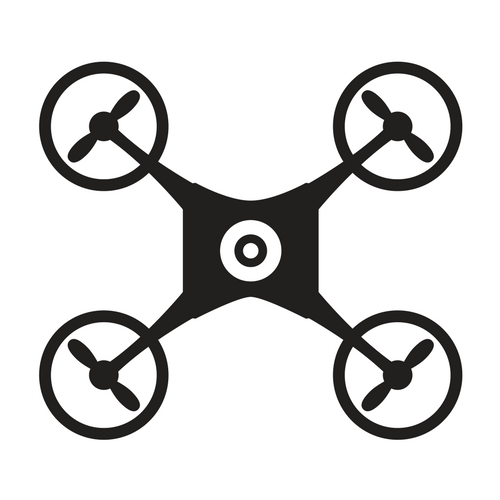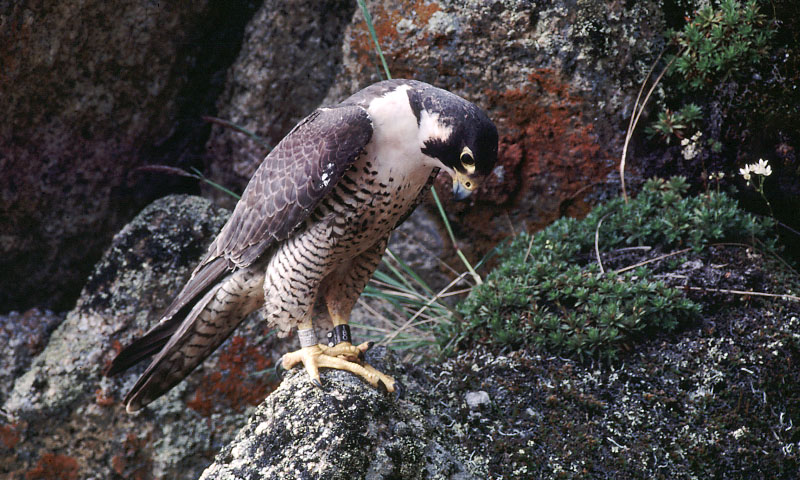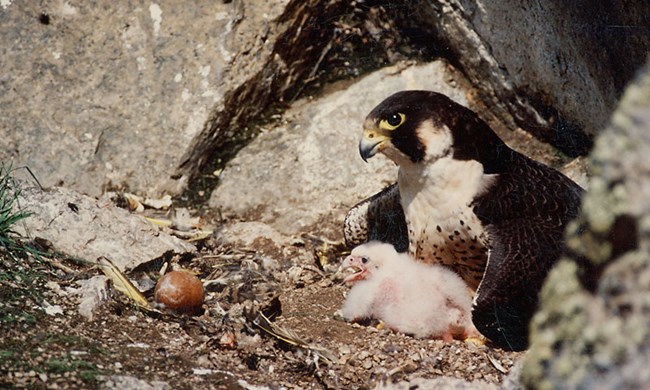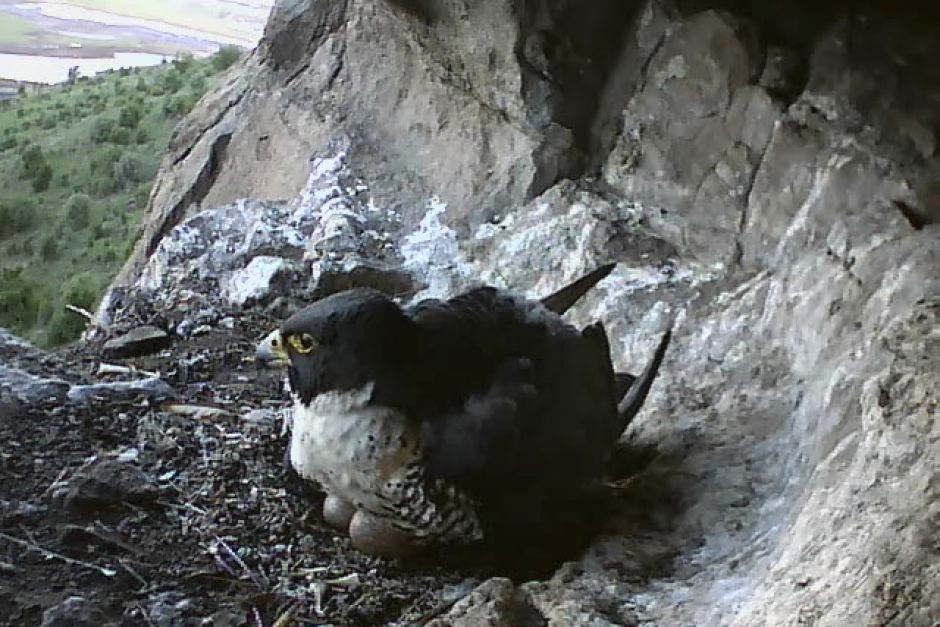Peregrine Falcons
During the 1950s and 1960s, peregrine falcons (Falco peregrinus) and other large predatory birds across North America were dying at faster rates than ever before due to the usage of the pesticide Dichlorodiphenyltrichloroethane (DDT). DDT caused a thinning of the eggshells, which prevented them from hatching chicks, which led to the rate of depletion in the population. Eastern North America peregrine falcons populations are thought to have been completely extirpated as breeders, meaning that the local population had been driven to extinction even though there may have still been falcons, there were no breeding pairs. The banning of DDT helped to stop the loss of peregrine falcons, however with no falcon breeding pairs remaining in the East it was not possible for peregrine falcon populations to recover naturally. Thankfully, conservation efforts spurred by the listing of the peregrine falcon as an endangered species helped the falcon population recover over the past 50 years through very successful reintroduction programs.
Peregrine falcons are now found across the state of Virginia, including the mountains of southwest Virginia, the coastal plain, and in downtown Richmond. The species is well adapted for mountain regions with cliff faces ideal for nesting as well as urban areas where tall buildings and bridges simulate these natural cliff faces and exploding pigeon populations provide a constant food source. Because these birds are so well suited for urban areas, they are a common site for many tourists and have actually begun to become internet celebrities with nest cams such as this one to a breeding pair in downtown Richmond. However, falcons within their historic, mountainous range are more difficult to protect and conserve because the cliffs where they nest are less accessible and the nests are more difficult to detect.
Falcons do not create large, standing nests similar to bird nests created by songbirds in trees. Peregrine falcons use “scrapes,” which are shallow circular depressions dug by the birds.
Without any stranding structure identifying a nest, it is very difficult to locate falcon nests, especially when they are positioned on cliff faces that are inaccessible to biologists.
Biologists and other land managers typically survey for peregrine falcon nests in other areas for non-cliff nesting birds using two methods, ground surveys and helicopter surveys. Neither of these methods are ideal due to their limited effectiveness and significant cost. Ground surveys are done by hiking to vantage points which can be dangerous due to the elevation that is needed to see with an unobstructed view of the nests. These surveys are aided by binoculars and spotting scopes and single survey periods can last greater than 9 hours. The main problems with these surveys are:
- Only portions of the cliff can be viewed within a single survey period
- The falcon’s diminutive size and coloring make them extremely difficult to identify against the cliff faces where they are located
When researchers leave a site with negative data, it does not mean that they have missed bird nests, there just may not be any nests there to begin with. Drone technology can reduce the many hours of labor and could potentially improve the accuracy of collected data.
The Virginia Department of Game and Inland Fisheries (VDGIF) approached us with the idea of using drones to survey cliff sides in southwest Virginia for peregrine falcon nests. This thought had occurred to biologists at VDGIF and other conservation groups within the region, but they did not have the means to do so. The extreme aggressiveness and territoriality of these birds has been well documented, with observation of falcons attacking much larger birds and even helicopters, which could be problematic.
Our team is working to develop UAV technologies that will allow surveyors to efficiently survey for peregrine falcon nests without endangering wildlife or expensive survey equipment.






Recent Comments